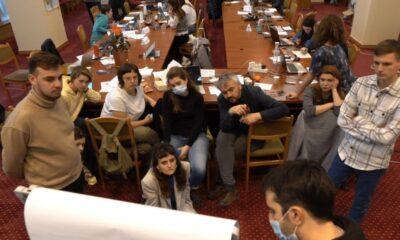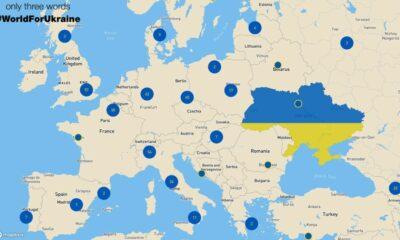Economy
Gulf Oil Producers, Others Ready To Dump Dollar
Reading Time: 4 minutesBritains daily The Independent has reported that Gulf Arab oil producers held secret talks with oil buying states on moving away from using the dollar as the sole currency for transactions.
Britain’s daily "The Independent" has reported that Gulf Arab oil producers held secret talks with oil buying states on moving away from using the dollar as the sole currency for transactions.
Just hours after the story was published, Saudi Arabia denied the report. Saudi Central Bank Governor Muhammad al-Jasser said his country has held no such talks.
"The Independent" names no sources for its information and gives no details about where the meetings took place.
But it says the meetings — which have involved central bank governors and finance ministers from the Gulf Arab states, Russia, China, Japan, and Brazil — have been confirmed by both Gulf Arab and Chinese banking sources.
The newspaper says that the oil producer and buyer states want to move away from the dollar to a basket of currencies including the Japanese yen, Chinese yuan, the euro, gold, and a new unified currency planned by the states of the Gulf Cooperation Council (GCC, which comprises Abu Dhabi, Bahrain, Kuwait, Oman, Saudi Arabia, and Qatar).
The paper concludes that the series of alleged meetings "augurs an extraordinary transition from dollar markets within nine years."
Oil industry analysts say the report is getting much attention in financial circles today but that there is also skepticism regarding many of its details.
That is because it is not surprising that officials may be exploring alternatives to the dollar as the sole currency for oil transactions. But it would be surprising if they are making any concrete plans to imminently change the existing situation.
"I don’t think that this is something that would happen anytime soon," says Melanie Lovett, financial editor for the Middle East Economic Survey, based in Cyprus. "They may be talking about pricing in different currencies but I think that always you will find that commodity exporters are examining how they do business and that would be just one aspect of this and I don’t think there is any particular significance in this respect."
She notes that the same oil producers cited as holding the secret meetings are economically so strongly tied to the dollar that they can ill afford to now move away from it.
"We think that any move, on behalf of the Gulf players in particular, to move away from the dollar would be doubtful, especially given that their currencies are pegged to the dollar," says Lovett. "Even Kuwait, which isn’t directly pegged to the dollar, has its currency pegged to a basket of dollar-weighted currencies."
Economic Might
Four of the biggest energy producers of the GCC — Saudi Arabia, Kuwait, Qatar, and Abu Dhabi — together hold an estimated $ 2 trillion in dollar reserves.
That could make them hesitate to weaken the value of the dollar by shifting toward a different oil currency standard. A weaker dollar would devalue their own holdings in dollars and weaken their own purchasing power.
China, a major oil buyer, faces a similar problem. Economists estimate that more that 70 percent of its foreign-currency holdings are in U.S. dollars or dollar-denominated assets. A weaker dollar would have a direct impact on China’s economic states.
Still, analysts say that there are many pressures for countries to consider alternatives to the dollars as the standard oil currency, even if any imminent move away from the dollar seems unlikely.
One reason is that the dollar’s weakness in the global currency crisis is raising doubts about whether it will always be strong and stable enough to safeguard the enormous portions of their wealth that countries have invested in it.
The doubts have risen further as other major currencies, notably the euro, have gained strength in recent years.
That means that states have to balance the losses they could suffer from moving away from the dollar against still greater losses they could suffer if the dollar were to become much weaker in the future. The possibility of reaching such a so-called tipping point unprepared is something that preoccupies every government in the world.
‘Changed Relations’
But for states whose currencies might be included in any new currency basket to replace the dollar as the sole standard for oil transactions, there are still other things to consider.
Oil consumers China and Japan, for example, would have to weigh how much their dollar reserves would be weakened against how much the value of their own currency might rise if it become more widely used as a tender for international trade.
Russia, an oil producer, faces still a different choice. It would have to balance any weakening of its dollar reserves against the hope that oil consumer states — freed from the dollar — might equally turn to ruble to buy oil, even if rubles were not included in the currency basket.
As the global economic crisis continues, it is almost certain that both oil producer and consumer states will spend a lot more time thinking about such questions.
The president of the World Bank, Robert Zoellick noted this week that "one of the legacies of this crisis may be a recognition of changed economic power relations."
Speaking at a meeting of the IMF and World Bank in Istanbul, Zoellick was not referring specifically to the oil industry. But his statement may help explain why the article in "The Independent" is catching the attention of many people.
The only oil-producer state that has moved away from the dollar in recent years is Iran, which plans to keep all its future-currency reserves in euros. But that move is widely seen by analysts as politically rather than economically motivated.
Economy
Moldova will receive a disbursement of 36 million euros as part of the the Economic Recovery Plan
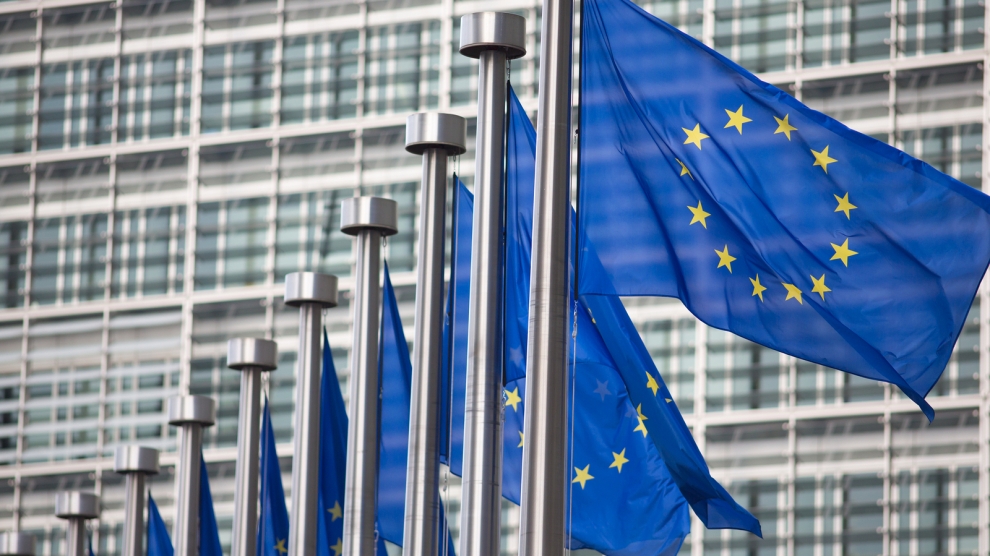
This week, the European Commission approved the disbursement of 36 million euros in grant money for the Republic of Moldova. The announcement was made by Deputy Director-General for Neighbourhood Policy and Enlargement Negotiations at the European Commission, Katarina Mathernova, who paid an official visit to the Republic of Moldova between September 13-15, together with Managing Director for Russia, Eastern Partnership, Central Asia, Regional cooperation and OSCE, at the European External Action Service, Michael Siebert.
The EU officials had meetings with President Maia Sandu, Minister of Foreign Affairs and European Integration, Nicu Popescu, Speaker of Parliament, Igor Grosu, Prime Minister of the country, Natalia Gavrilita, as well as key representatives of Government, international financial institutions and the civil society, according to a press release issued by the Delegation of the European Union to the Republic of Moldova.
Beside such topics as the EU-Moldova relations and prospects, the priorities of the reform agenda of the new Moldovan Government, preparations for the Eastern Partnership Summit at the end of the year and the Transnistrian conflict settlement, the officials also discussed the EU assistance in support of reforms and the Economic Recovery Plan for Moldova, which was announced in June with a total EU support of 600 million euros over the next 3 years.
“The first measures under the Economic Recovery Plan will shortly materialize, with the expected disbursement of 36 million euros in grant money under budget support programmes to support the authorities’ efforts to fight against the consequences of the pandemic. Moldova can count on EU’s assistance on its path to reforms and to recovery, bringing tangible results to citizens,” Katarina Mathernova stated.
The plan is based on assistance provided by the European Union through various bilateral and regional instruments, aiming to mobilize the funds in the form of grants, loans, guarantees and macro-financial assistance.
“The Economic Recovery Plan for the Republic of Moldova involves much more, not just this financial support provided immediately. It must help digital transformation, strengthen infrastructure, energy efficiency, education and support small and medium-sized enterprises,” the EU official also said.
As Prime Minister Natalia Gavrilita informed, “The Economic Recovery Plan and the 5 flagship initiatives for Moldova in the Eastern Partnership will directly contribute to the reform and consolidation of institutions, stimulate long-term socio-economic development, bring direct benefits to citizens, and unleash new economic opportunities through promoting the green agenda and digitization. Small and medium-sized enterprises (SMEs) have been hit hard by the crisis. Promoting and diversifying access to finance and reducing collateral requirements will be essential in supporting economic operators. We are grateful to the EU partners who will launch two programs to support 50 000 independent Moldovan SMEs to adapt to the new conditions.”
President of the Republic of Moldova, Maia Sandu, welcomed the decision of the European Union to disburse about 745 million lei in grant money, as the official page of the President’s Office announced. “EU support comes after a long period of freezing of European assistance, caused by former governments. We managed to relaunch the political dialogue with the European Union and resume financial assistance. The Republic of Moldova is gradually regaining the trust of its strategic partners. This European support is also a signal of encouragement for the new Government team in its commitment to clean up the institutions, fight corruption and launch development programs in the country,” said Maia Sandu.
Photo: unknown
Economy
Romania and Moldova signed a partnership memorandum pledging to cooperate in promoting their wines
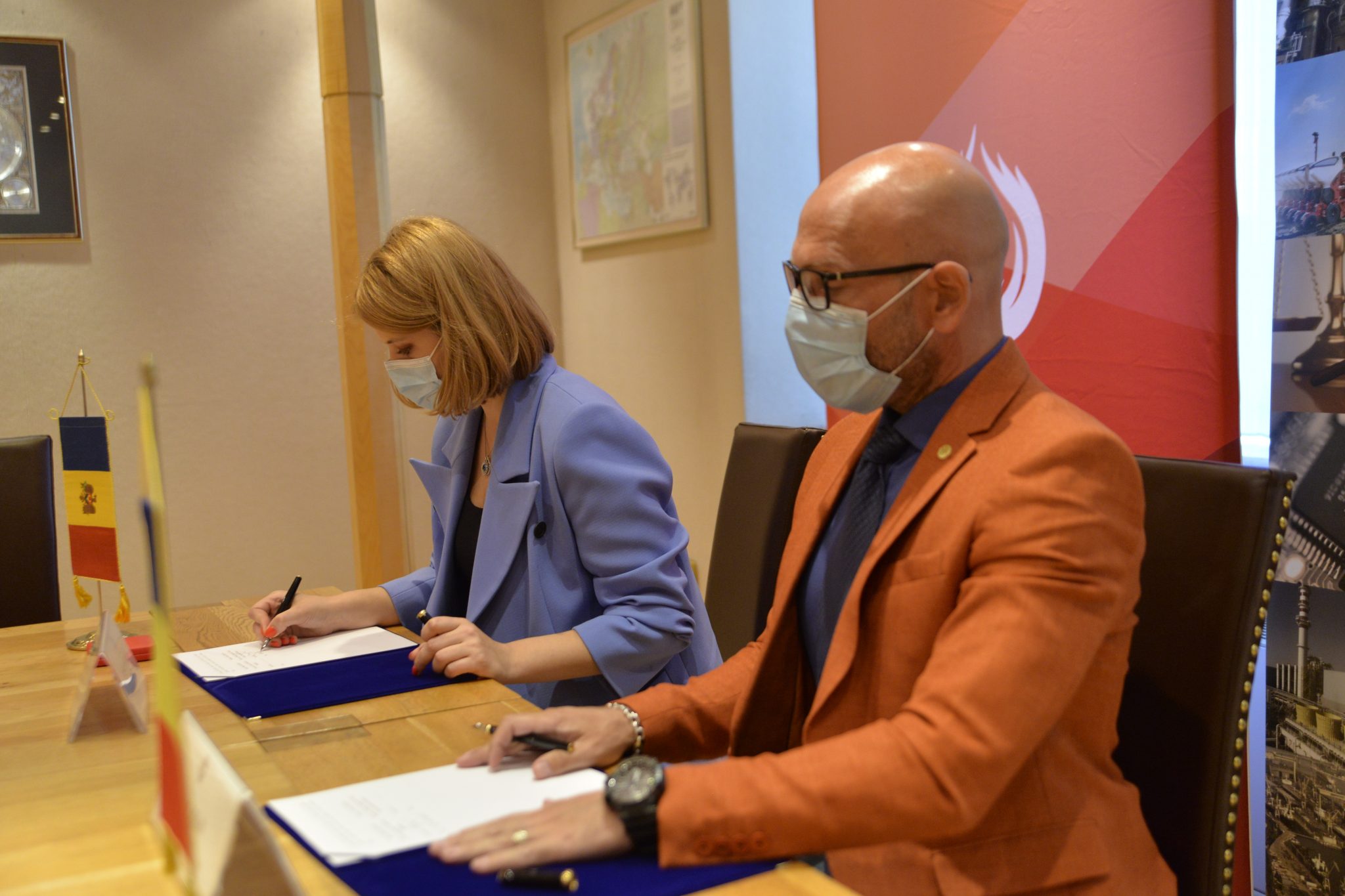
The Chamber of Commerce and Industry of Romania (CCIR) and the National Office for Vine and Wine (NOVW) of the Republic of Moldova signed, last week, a memorandum of cooperation on organizing joint promotional activities in the markets of common interest, as the CCIR announced.
China, Japan or the USA are just some of the markets targeted by the Romanian and Moldovan institutions. The memorandum also involves advertising activities for wines from common indigenous varieties, promoting the oeno-tourist region, developing a tourist route in the two states, exchange of experience, study visits, and mutual support in identifying new export opportunities. “We are very confident that this collaboration between our organizations will lead to sustainable economic growth and a higher degree of well-being among Moldovans and Romanians,” claimed Deputy Secretary-General of CCIR, Bogdan Visan.
On the other hand, Director of the NOVW, Cristina Frolov, declared that no open competition with Romania is aimed at the governmental level of the Republic of Moldova. “This request for collaboration is a consequence of the partnership principle. Romania imports 10-12% of the wine it consumes, and we want to take more from this import quota. Every year, the Romanian market grows by approximately 2.8%, as it happened in 2020, and we are interested in taking a maximum share of this percentage of imported wines without entering into direct competition with the Romanian producer,” the Moldovan official said. She also mentioned that Moldova aims at increasing the market share of wine production by at least 50% compared to 2020, and the number of producers present on the Romanian market – by at least 40%.
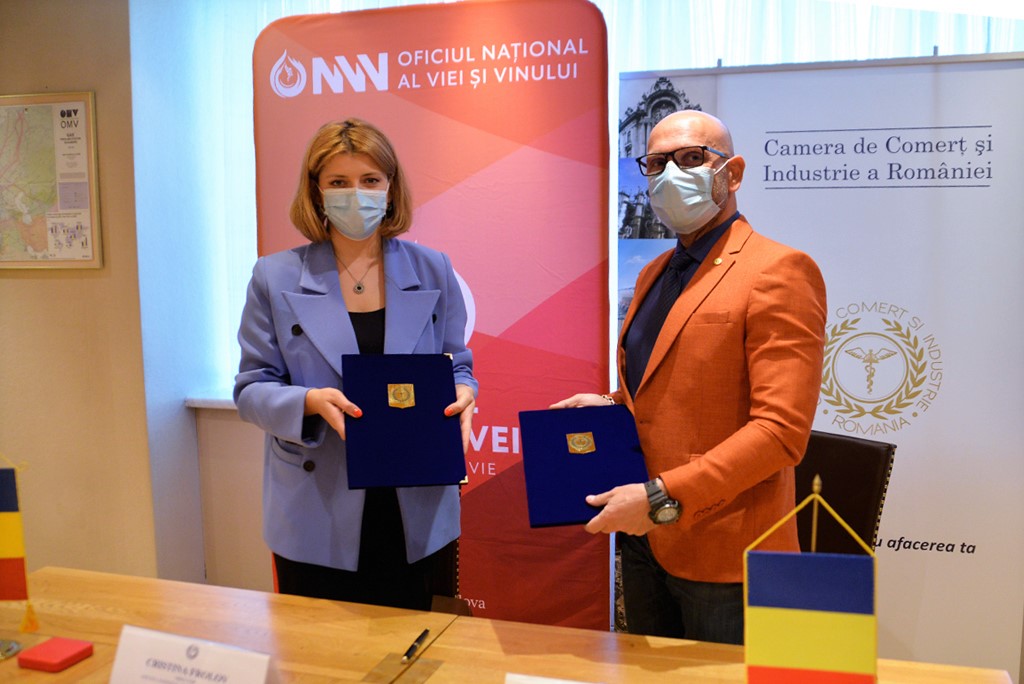
Source: ccir.ro
**
According to the data of the Romanian National Trade Register Office, the total value of Romania-Moldova trade was 1.7 billion euros at the end of last year and over 805 million euros at the end of May 2021. In July 2021, there were 6 522 companies from the Republic of Moldova in Romania, with a total capital value of 45.9 million euros.
The data of Moldova’s National Office of Vine and Wine showed that, in the first 7 months of 2021, the total quantity of bottled wine was about 27 million litres (registering an increase of 10% as compared to the same period last year), with a value of more than one billion lei, which is 32% more than the same period last year. Moldovan wines were awarded 956 medals at 32 international competitions in 2020.
Photo: ccir.ro
Economy
Moldova’s hope to be a top walnut exporter and its main difficulties
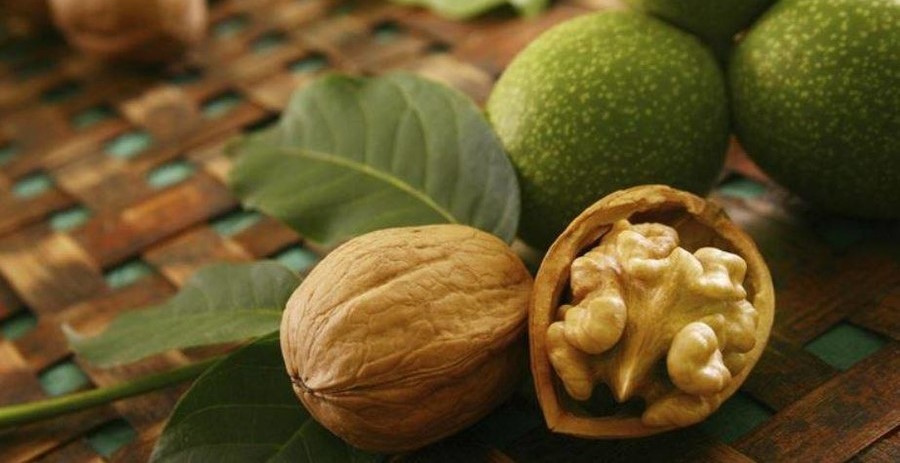
The Republic of Moldova has perfect weather conditions for growing walnut trees, that creating a great potential of walnut production and trade, especially on international markets, where the demand is way higher than the product’s supply. National and international experts believe that the country’s walnut production industry is on the verge of important transformations, which could lead to increased yields, quality and competitiveness worldwide.
According to authorities, Moldova exports 34-35 thousand tons of walnuts in shell, which is about 7% of the total export of fruit and 5% of the total export of horticultural products. The export value is assessed as being $120 million, that being 57-60% of the total fruit export value and about 50% of horticultural export value. Most of walnut crops are exported to the EU countries, such as France, Germany, the Netherlands, Romania and Austria. The country’s exports were among the world’s top 10 when it comes to the highest dollar value of the product during 2020.
Viorel Gherciu, Minister of Agriculture and Food Industry, pointed out that the production in the domestic walnut industry has increased by 55% in the last five years, which ranks Moldova among the main producers in the world.
“The biggest opportunity for this industry is that we are in the geographical proximity of the largest walnut import area in the world, which is the European Union, with almost 40% of total imports in the world. We are on the EU border, with privileged relations, with an Association Agreement. We already enjoy a good relationship in working with European importers, they trust our processors. A very close collaboration has been created and this is, in fact, the guarantee for those who invest in the area,” claimed the president of the Walnut Producers Association, Oleg Tirsina.
The data provided by the National Bureau of Statistics show that there are 34.7 thousand hectares of walnut plantations in the country. 20.90 hectares are represented by orchards. 75% of planted orchards are formed of old varieties trees. 30-35% of the exported production comes from orchards, the rest comes from individual farmers and plantations along the roads. This means that the quality of walnut production is not at its maximum potential. Developing commercial plantations through orchards modernization and extension of walnut varieties would provide double yield and better quality, experts say.
Governmental support in the form of subsidizing solutions, foreign investments and credit options are indispensable for the industry development. One of the financing options is the credit line of the European Investment Bank Project. Since 2016, 15 producers and processors of nuts, almonds and hazelnuts have benefited from these loans with the total amount of investments worth 8.7 million euros. A further extension of the project would provide another 60 million euros for the modernization of the horticultural sector in general and for harvesting organic walnuts in particular.
Photo: heymoldova.com


